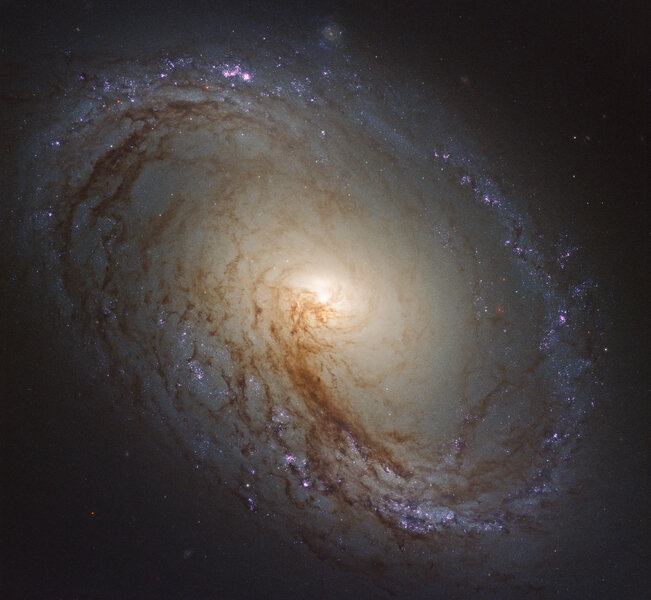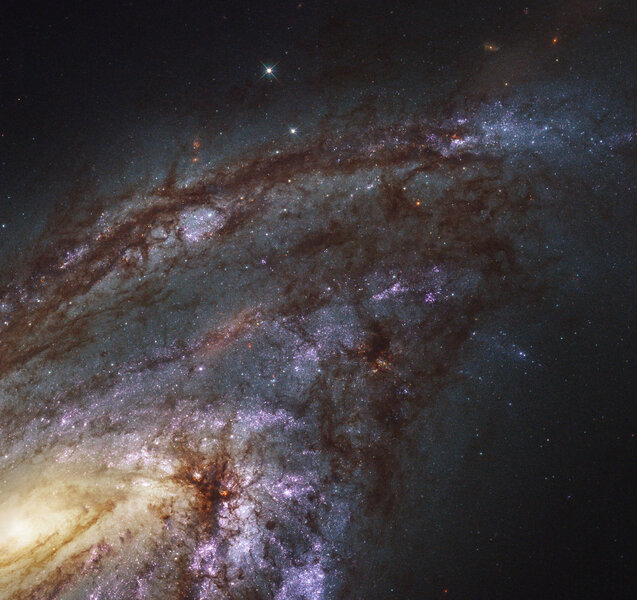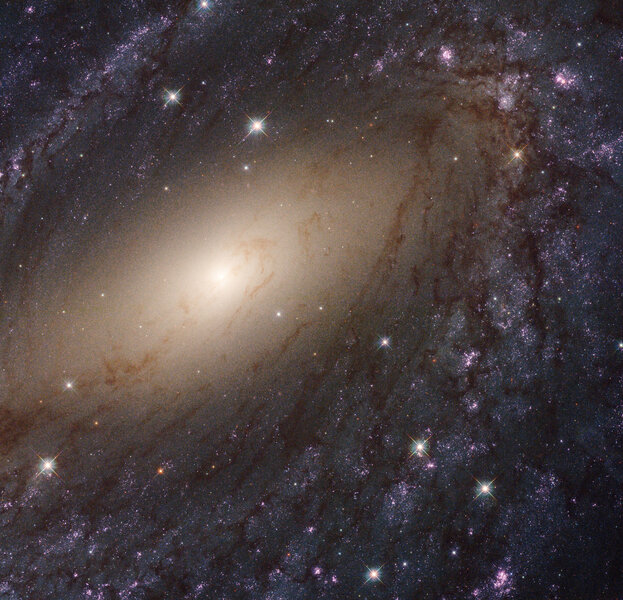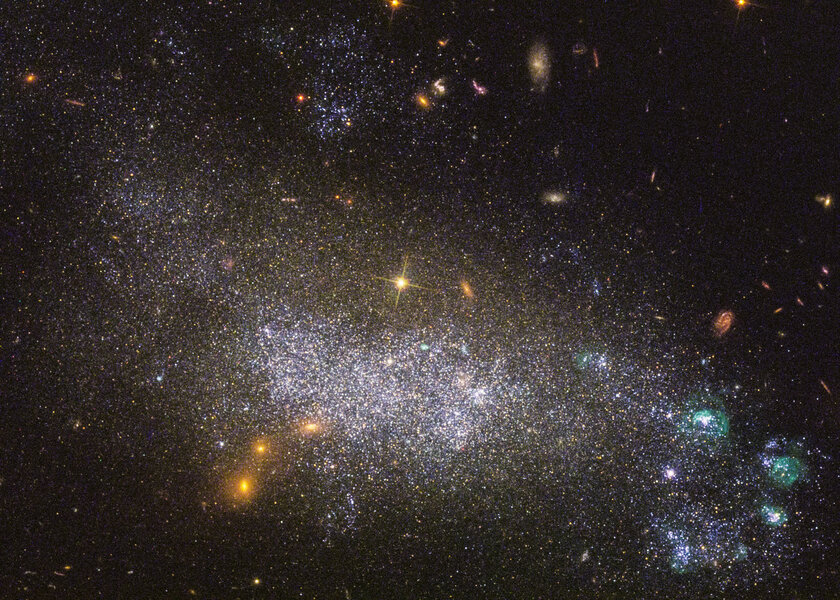Create a free profile to get unlimited access to exclusive videos, sweepstakes, and more!
Hubble + nearby galaxies = galactic gorgeousness
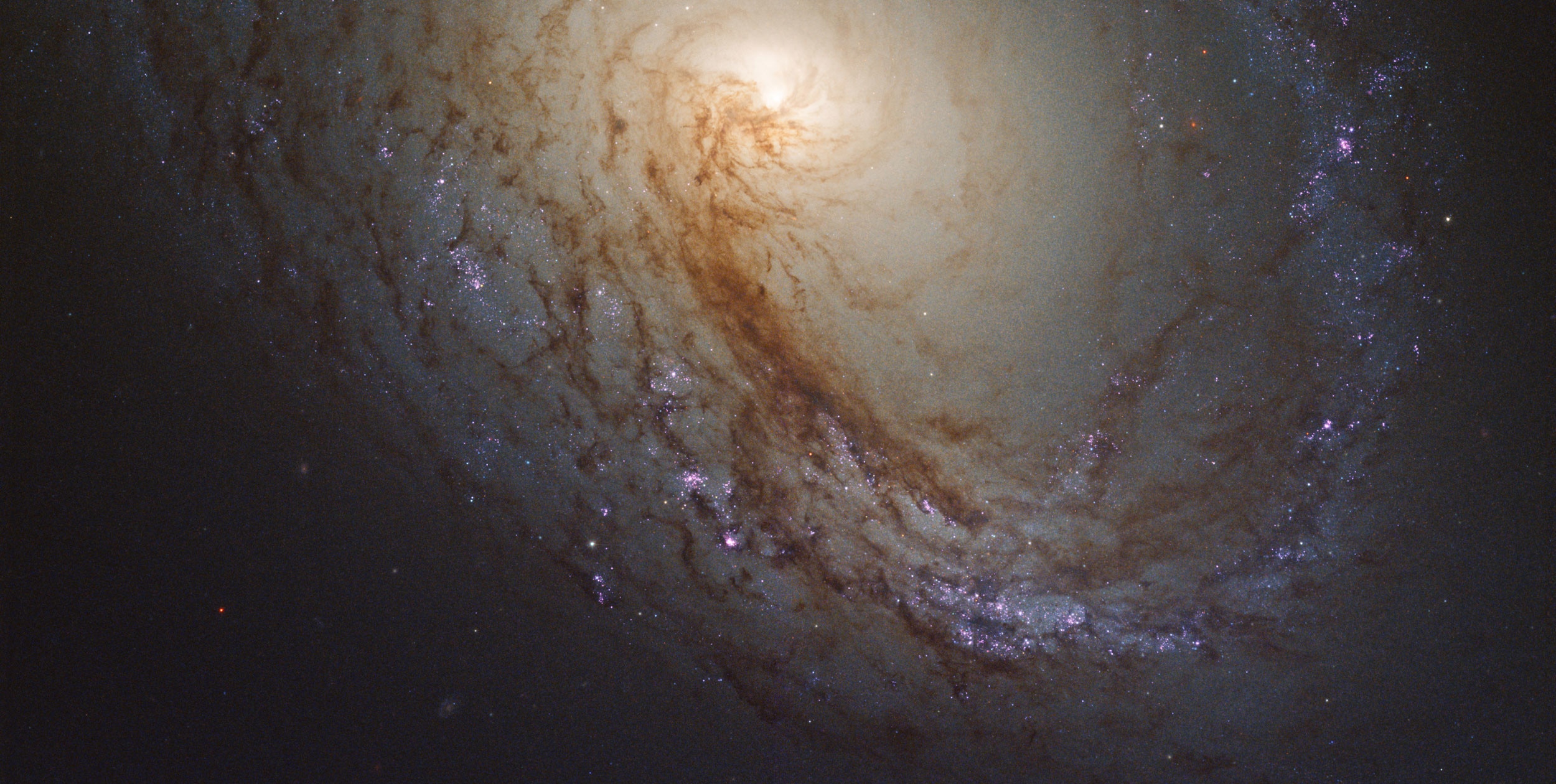
How about I throw some gorgeous galaxy images from Hubble at your faces?
I can do this today because of the LEGUS survey, which stands for LEgacy ExtraGalactic Ultraviolet Survey. What this team of astronomers is doing is making a map of nearby galaxies in the ultraviolet, where young massive stars shine brightest; these maps can then be used to understand better how these stars form, and what impact they have on bigger galactic structure like spiral arms.
They are imaging 50 local galaxies — by "local," I mean nearby the way astronomers think of it, so galaxies closer than about 40 million light-years. Hubble can resolve stars in galaxies that close, so individual stars can be identified, as well as hot stars in clusters.
They're using two Hubble cameras (the Advanced Camera for Surveys and the Wide Field Camera 3) to take multiple observations of each galaxy using ultraviolet and visible light. This way they can see the stars as well as gas and dust in the galaxies, to get a better understanding of how they interact. They'll also see the environments around supernova, stars that have exploded, and get better information on them, too.
OK, ready? Here's a galaxy now!
HOLY WOW.
That's M96, a spiral galaxy about 35 million light-years away. It's roughly the same size as our Milky Way, but unlike our galaxy this one is obviously screwed up. The arms are asymmetric, the core is off-center (more likely the galaxy itself is asymmetric), and the dark dust is thicker on one side than the other. Sometimes that's an effect of our viewing angle, where dust on the far side of the galaxy is less obvious because all the stars between us and it "fill in" the light, making the dust less obvious. However, in this case, the asymmetry appears to be real. It's not clear why, though it's in a group of other galaxies, so gravitational interacts could be the culprit here.
You can clearly see that the inner part of the galaxy appears reddish and smooth. That's because there’s less gas and dust there, and more old stars (blue stars die young, leaving the redder, lower mass stars to dominate the light). The clumpy arms show lots of gas (the pinkish spots) where stars are forming, too. I can see why the LEGUS folks wanted to get good images of M 96! There are clear connections between hot stars and the galactic structure. Plus, it's just weird, so maybe these new UV + visible light images will help us understand it better.
Next up: M66.
Oof, another stunner. It's also about 35 million light-years away, but seen at more of an angle, closer to edge-on. I noticed right away that the core appears smaller to me too in relation to the arms. An interaction with a nearby galaxy probably is behind this as well. Wider-field shots show the arms aren't symmetric, either, likely for the same reason.
Like most galaxies that have had a close encounter, M66 is also undergoing strong star formation right now, as you can see by the huge number of gas clouds glowing in it. Gas clouds can collide after a near pass of another galaxies, collapsing them and triggering bursts of star formation.
Now check out NGC 6744:
Oooo, glittery! A bit closer at 30 million light-years, this is another spiral galaxy. The arms aren't as well defined as the other two, and I'd call this a flocculent galaxy, meaning the arms are patchy. Like M96, the core is smooth and red, with some dust lanes, and is highly elongated, like a pill. This makes it a barred galaxy, where the gravity of stars in the disk and the core interact and stretch out the latter. Our own galaxy is barred, too.
Again, you can see a whole lot of gas clouds pepper the arms. The LEGUS survey picked out galaxies like this on purpose to maximize the number of stars and clusters they see. This galaxy is located in the constellation of Pavo, which is near enough to the plane of our own galaxy that I suspect a lot of the bright stars you see in the image are actually local, in our Milky Way, and not part of NGC 6744.
OK, one more: Behold, UGC 5340:
Obviously, not all the galaxies LEGUS observed were spirals. This one is classified as irregular, and is really weird. It obviously has vigorous star formation going on; there are lots of lovely young, massive stars in it. The lower right corner in particular is cranking out stars.
But the amount of heavy elements in the galaxy is low. These elements are created in stars and scatter via stellar winds and supernovae; a galaxy like this should have a surplus of such elements, not a deficit. It may also be either interacting with a nearby galaxy or even merging with one after a collision. I poked around the journals and didn’t see anything conclusive.
Mind you, these are just a few examples of the LEGUS galaxies; the Hubble site has more, as does the LEGUS site as well. They've done well so far: They've catalogued 8,000 clusters of stars in their target galaxies, and an incredible 39 million hot, young, massive blue stars.
These observations will go a long way toward us understanding our local Universe better, and even the more distant regions. We can use what we see with these nearby galaxies as templates to compare with much more distant galaxies where the individual stars or even clusters can’t be picked out from the galaxy itself. We see distant galaxies as they were in the past, so having a survey of galaxies as they appear now will also help us understand how the Universe evolves over time, too.
All in all that’s a pretty useful tool to have at our disposal. These are much more than just pretty pictures. Well, they're gorgeous pictures. But they're also a key to exploring the cosmos, and that is something that's a feast for the brain as well as the eyes.
